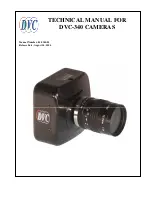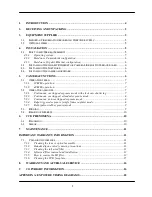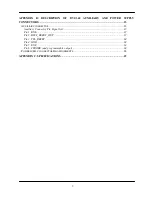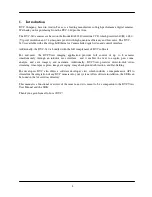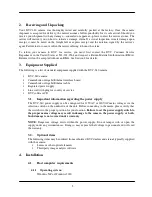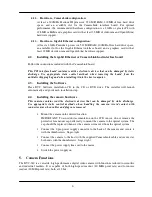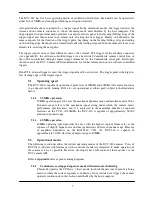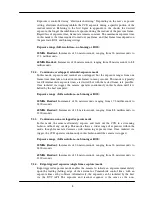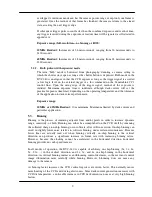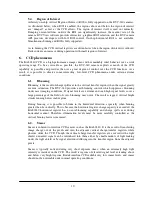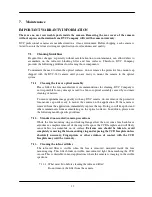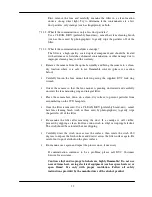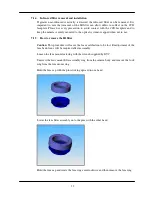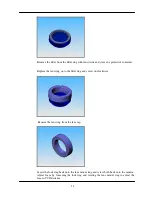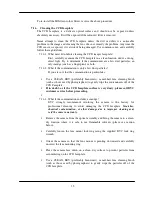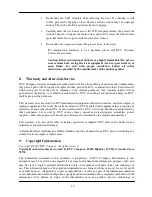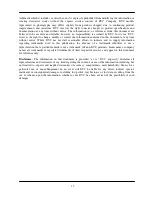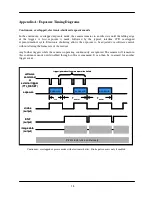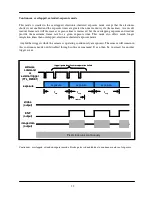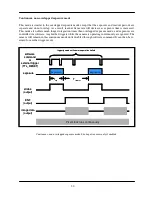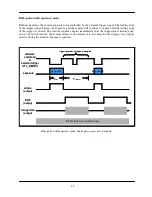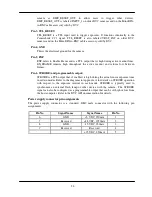
9
overlapped, continuous mode and has the same exposure range, except only one frame is
generated. Once the readout of that frame has finished, the camera returns to the armed
state, awaiting the next trigger edge.
If subsequent trigger pulses occur faster than the combined exposure and readout time,
any trigger received during the exposure or readout time will be ignored, as illustrated in
appendix A.
Exposure range (full-resolution—no binning or ROI):
20MHz Readout:
Increments of 36 microseconds, ranging from 36 microseconds to
2400 seconds.
40MHz Readout:
Increments of 18 microseconds, ranging from 18 microseconds to
1200 seconds.
5.2.5.
Bulb (pulse-width exposure) mode
The term “bulb” mode is borrowed from photography, denoting a camera setting in
which the shutter stays open as long as the shutter button is depressed. Bulb mode in the
DVC-340 is analogous in that the CCD exposes as long as the trigger signal is asserted
(a low logic level on the external trigger or a low command on the CameraLink CC1
control line). Upon the rising edge of the trigger signal, readout of the exposure is
initiated. Maximum exposure time is indefinite, although dark current will set the
practical exposure time limit, depending on the operating temperature and the tolerance
of the application to dark current pattern noise.
Exposure range:
20MHz or 40MHz Readout:
10us minimum. Maximum limited by dark current and
particular application.
5.3.
Binning
Binning is the process of summing adjacent lines and/or pixels in order to increase dynamic
range, sensitivity, or both. Binning can either be accomplished on the CCD itself by summing
the collected charge (on-chip binning) or in software, after A/D conversion. On-chip binning can
result in slightly lower noise relative to software binning, under certain circumstances. Because
fewer lines are actually read out when binning vertically, on-chip binning in the vertical
direction can produce a significant increase in frame rate with increasing binning ratios.
However, because the clocking cannot be accelerated in the horizontal direction, horizontal
binning provides no such speed increase.
In all modes of operation, the DVC-340 is capable of arbitrary on-chip binning (2x, 3x, 4x,
5x…21x,…) in the vertical direction, and 2x, 3x, and 4x on-chip binning in the horizontal
direction. As vertical binning increases, antiblooming control decreases, so the user must control
image illumination more carefully while binning. However, blooming does not cause any
damage to the camera.
As binning factor increases, the CCD vertical registers are driven faster. This naturally causes
more heating of the CCD and driving electronics. Since dark current generation increases with
CCD die temperature, a noticeable increase in CCD dark current can occur at very high binning
factors.

